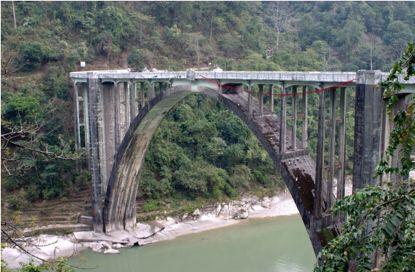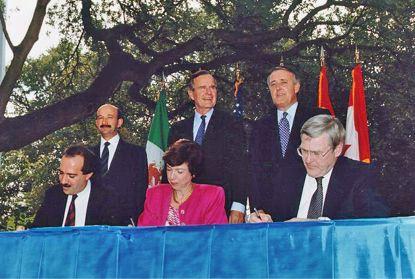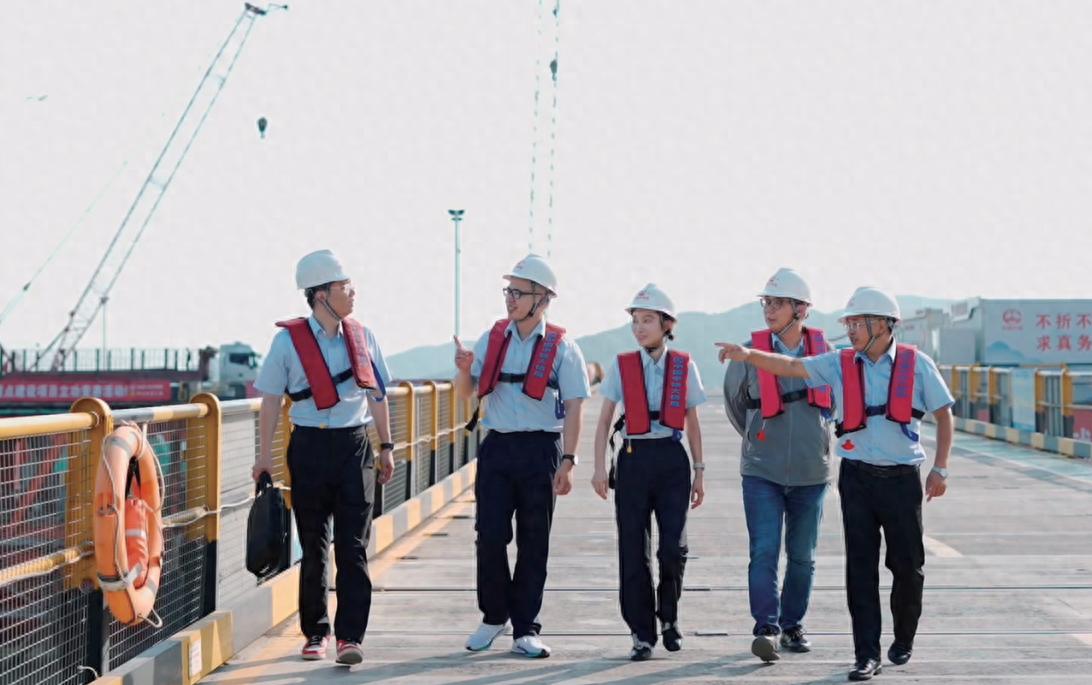美国物流未来的五大明显趋势,主要集中于基础设施投资、物联网应用、最后一英里零售配送、提高供应链透明度和应对国际贸易规则变迁等主要方面。从技术变革、产业发展、制度变迁等角度,美国的趋势将会给中国企业一定的启发。
下面,让我们来看看2018年五大趋势的具体内容。有兴趣的读者可以读读英文原文,体验一下原作者的风趣与洞察力。
——王国文

1、 政府基础设施投资上升
美国道路、桥梁、铁路等基础设施陈旧、老化等问题逐渐得到重视,未来,在特朗普政府的重视下,政府在基础设施投资将大幅度上升。虽然民主和共和两党在很多问题争持不下,在保持美国基础设施的安全和效率这一点上显示出了一致性。
这一环境和趋势下,企业需从安全和效率的角度来向政府强调基础设施的改进对物流运营成本和效率的影响。
美国大规模的基础设施投资更新也许为中国的建设企业提供了机会(PPP?),那就看中美贸易战如何打、如何谈了。
We all know the roads are bad. Potholes, unstable bridges, unsafe railways, and old highways have become a staple of the American system. It’s appalling and shockingly dangerous.
While this knowledge has been simmering for years, 2018 may be the year we see some investment in American infrastructure. In May 2017, the Trump Administration started talking about infrastructure, saying “If the United States continues to underinvest in infrastructure, we will continue to fall further and further behind our peers.”

This bridge has some issues.
While the budget is still being hashed out, there is bipartisan agreement on the need to fix America’s roads to keep trucks and cars safe and travel efficient.
What it means for businesses
If you’re concerned about real change falling by the wayside, call your elected officials to let them know what infrastructure improvements mean to you, from both a safety and business perspective.
One of the major challenges for shipping will be controlling costs, as fuel prices are forecast to rise in 2018. Managing shipping costs requires the most efficient roads and rails possible.
If we’re going to see real change, be prepared for road work that causes delays and detours. I don’t expect any significant changes to take place until the second quarter at the earliest, but they’ll have an almost daily impact on your business whenever they arrive.
2、 物联网带来全球经济增长
如果你对物联网在物流中的应用听的太多了、耳朵都磨出茧子来了,我劝你还是去买一对耳罩带上吧 – 2018年将是物联网持续应用的一年,之中的讨论会越来越多。
利用RFID、GPS和其他连接传感器跟踪发货,将使货运更加高效和自动化。同时,随着AI和机器学习的应用,我们将获得更多的方法来管理和分析物联网数据。这将增加网络优化规划机会,最终降低成本。
应用层面,目前已经有一大堆车队管理软件可用,让你和你的司机直接联系起来,企业管理者了解他们是如何驾驶的,这样可以节省时间或金钱。
这对企业意味着什么?如果你要想加入竞争,就得搭上物联网这班车。
如果你已经开始安装了各种各样的感应器、传感器,已经实施了互联网计划,那下一步就是要考虑如何来利用好物联网产生的大数据资源了。如果你还没有开始物联网应用,兄弟,你总得做个计划了吧?
If you got tired of hearing about the internet of things this year, you might want to buy some noise-cancelling headphones. 2018 is set to be another nonstop year of IoT chatter, prediction, and implementation.
Offerings like the BlackBerry Radar are already making waves, and you should expect more sensor and tracking innovation in 2018. Tracking shipments with RFID, GPS, and other connected sensors is making shipping more efficient and automated.
By keeping an eye on shipments, logistics businesses all along the supply chain can make better decisions about routing, staffing, and warehousing. That leads to less downtime and fewer gut-based decisions about what to put where and who to staff when.
As we see increased growth in AI and machine learning, we’ll gain even more ways to manage and analyze IoT data. This will increase opportunities for better planning, ultimately reducing costs.
What it means for businesses
If you want to compete, you’re going to have to get on the IoT train.
Right now, you can implement a ton of small sensors, mobile apps, and other connected devices to make your operation more connected and easier to oversee. Once those are in place, turn to business intelligence software to start understanding the new data you’re generating.
If you don’t have smart devices or business intelligence in place right now or if your business lacks the capital to deploy anything, at least put a plan in place. IoT devices and insights can help you cut costs by finding inefficiencies in your work.
A handful of fleet management software options already offer devices to connect you to your drivers, giving you insight into how they’re driving and where they could save time or money.
3、零售商将聚焦最后一公里
未来,对于零售商而言,满足客户免费和快速的交货要求将变得越来越重要。
亚马逊改变了我们买东西的方式,购物者将不再更多的考虑哪个商品的价格、评价等好一点,因为如果零售商不提供两天或隔夜送货,购物者那就什么都不考虑了 – 客户马上就跑到别处去了。
越来越多的零售商将会重点聚焦到全渠道的配送问题 – 是配送到店还是店内取货。零售商将有效利用现有的、快速的发货选择,为客户提供快速的、免费的送货。
这意味着什么:客户的需求决定一切。物流企业将抢食零售业的最后一公里配送的蛋糕。不论是自动货柜还是送货上门,企业都得有一定的网络规划能力,光干活还不行,还得有脑子。
Amazon has changed the way we buy things. If you’re buying online, you expect reviews, price matching, lots of shipping options, and fast returns. Almost all of these expectations have some impact on the supply chain, but none more than shipping options.
美国邮政的机会来了 – 他们来敲门,想在最有一英里配送中获得成功。
USPS comes knocking for last mile success.
If retailers don’t offer two-day or overnight shipping, shoppers will often go elsewhere. Short shipping times put huge pressure on retailers to solve the last mile problem, as getting the actual item to a buyer’s doorstep is often the most challenging part of the whole process.
To address this problem, I expect to see more and more retailers embrace omnichannel shipping options such as ship to store and in-store pickup. These allow retailers to use their existing—and fast—shipping options while giving customers the free and fast delivery they demand.
What it means for businesses
This is a great deal for retail shippers. Omnichannel shipping means predictable demand from retailers without having to design last mile delivery options.
For last mile shippers, it’s less of a good thing. Even retailers who don’t adopt the ship to store model may move to an Amazon Locker-style system, which also cuts out the final, front door drop off.
If you’re in either camp, be sure to proactively work with the retailers in your portfolio to understand the needs of their customers. Increasingly, their operations are driven by customer demand rather than being self-guided.
If you can get ahead of that demand, you’ll be in a position to solve their shipping problems, whatever form they take.
4、 透明度将继续成为供应链核心议题
未来,客户将越来越担心供应链的透明度,缺乏供应链信息、没有可视度的供应链,会对品牌造成负面影响。供应链透明度的信息,不仅涵盖了供应链自身的货物和移动的问题,还涉及到供应链伙伴、安全、环境、甚至人权的信息。
在这一趋势下,企业需更多地、积极主动地了解客户关心的技术和客户服务问题,并了解企业的服务是否符合他们的需求,以便进行及时反馈。
千万不要等到自己陷入困境,才考虑供应链透明度的问题。
Customers aren’t just looking for value. While brands are being led to make shipping changes by demanding customers, they’re also increasingly worried about the transparency of their supply chains.
The director of the Global Supply Chain Institute summed it up nicely, saying “A lack of ability to provide [supply chain] information in the face of safety or environmental violations can create a negative perception of the brand that may require immediate remediation and could take a brand years to recover from, if at all.”
The definition of transparency is expanding, and no longer just encompasses whether you shipped via a natural gas-powered train or by air. Consumers are increasingly aware of salary and worker rights issues, environmental factors, and even political affiliations.
While the majority of buyers are still passive processors of supply chain information—they care, but don’t go looking for the data themselves—people are ready to take action if something they don’t like comes to light.
What it means for businesses
Be proactive. Know what technology and customer service issues clients care about, and figure out if your operations align with their demands. Odds are you’ll have a few processes in place that your clients’ clients won’t love.
While you don’t need to bend to every whim of the masses, there are going to be larger social movements and demands you shouldn’t overlook. Fuel inefficiency isn’t great for your business or the environment, but it isn’t going to severely damage your brand.
On the other hand, if you’ve been subject to major workforce problems and controversy, you might want to straighten things up before you get caught in the spotlight.
5、国际贸易规则与变迁
未来国际贸易环境将变得更加捉摸不定。特朗普政府表示,没有哪个贸易协定能够安全自保。从北美自由贸易协定到美国-韩国贸易协定的所有内容都有可能被修订或废除。
即使所有现有的贸易协定都保持不变,仍有许多新的法规正在酝酿之中,这将改变美国物流企业的运作方式。特朗普政府正在推动美国制造,增加进口关税,降低国内企业所得税,吸引制造业回归美国。
未来几年,最难以琢磨的就是国际贸易规则的改变,没有人可以独善其身。企业最好提前考虑自身在哪些方面存在对规章制度和贸易的依赖,要严格审查企业自身的合规性,以便提前做好准备,要考虑好在哪里投入时间和金钱,应该支持或者反对哪些贸易规则。
I led with infrastructure, because of its daily impact and likelihood to change. Almost all the political powers that be agree that something needs to be done, and whatever action they take is guaranteed to affect your business. If we look a level above infrastructure, we get into trends affected by regulation and trade.

北美自由贸易协定签字。
The signing of NAFTA.
The Trump Administration has indicated that no trade agreement is safe. Everything from NAFTA to the U.S.-South Korea trade agreement is up for revision or deletion.
Even if all existing trade agreements are kept in place, there are plenty of new regulations under consideration that would change how American logistics businesses operate. The Trump Administration is pushing American Made, which may lead to increased tariffs and a drop in exports.
What it means for businesses
There are so many moving pieces that it’s almost impossible to suss out what things will look like five years from now, or even next year.
Your best bet is prioritizing your business’ reliance on regulations and trade to better understand where to put your time and money. The next few years will be busy for trade organizations, unions, and industry associations. By knowing which issues are most important to your business, you’ll know which regulations you should step up to defend or attack.
When we look at trends for 2019, perhaps we’ll be talking about the five agreements and regulations that have bubbled to the top. Right now, there’s too much noise to make a concrete prediction.
In the meantime, figure out what you can live with and what you can’t, then focus on supporting regulations that make your business better and fighting those that will damage your bottom line.
原文 | from Logistics Technology
摘编 | by 谭慧芳
限 时 特 惠: 本站每日持续更新海量各大内部创业教程,一年会员只需98元,全站资源免费下载 点击查看详情
站 长 微 信: lzxmw777






